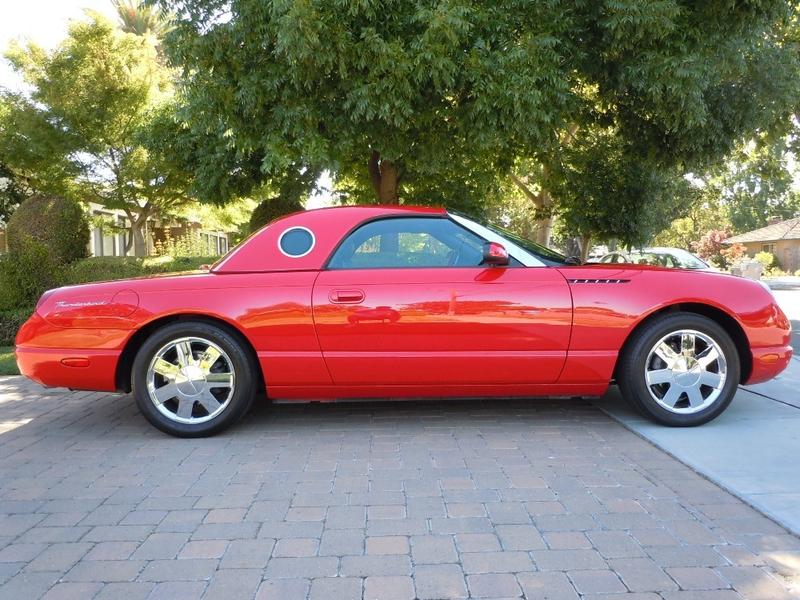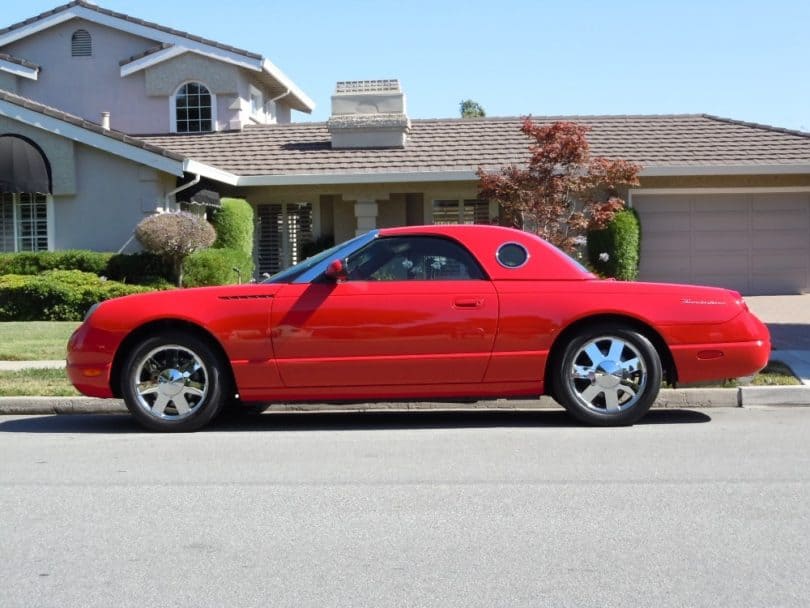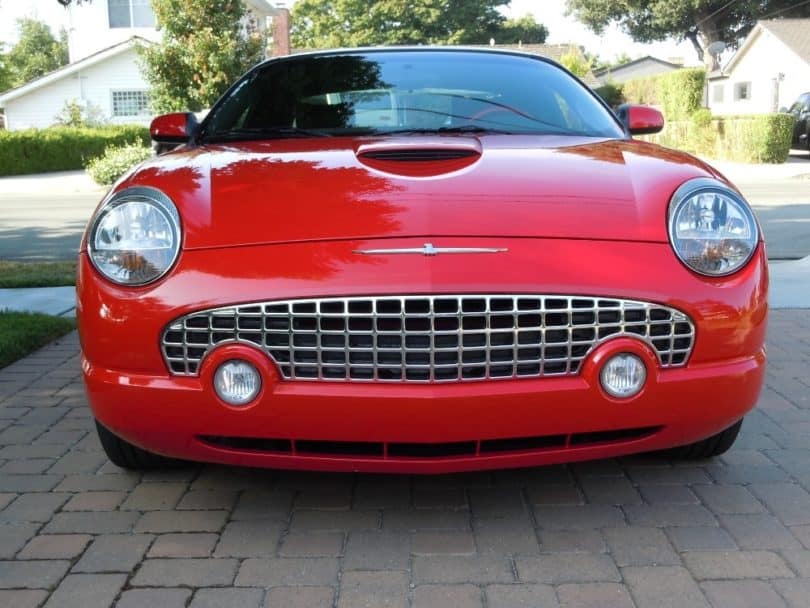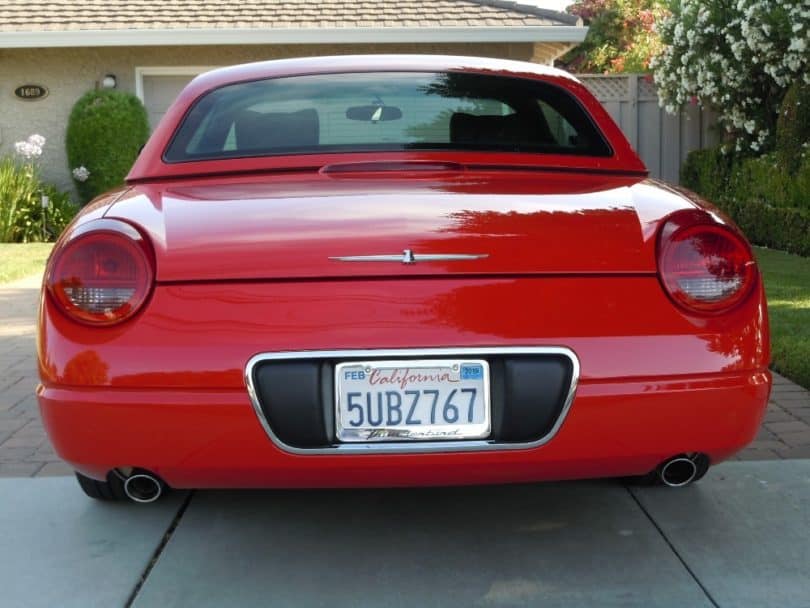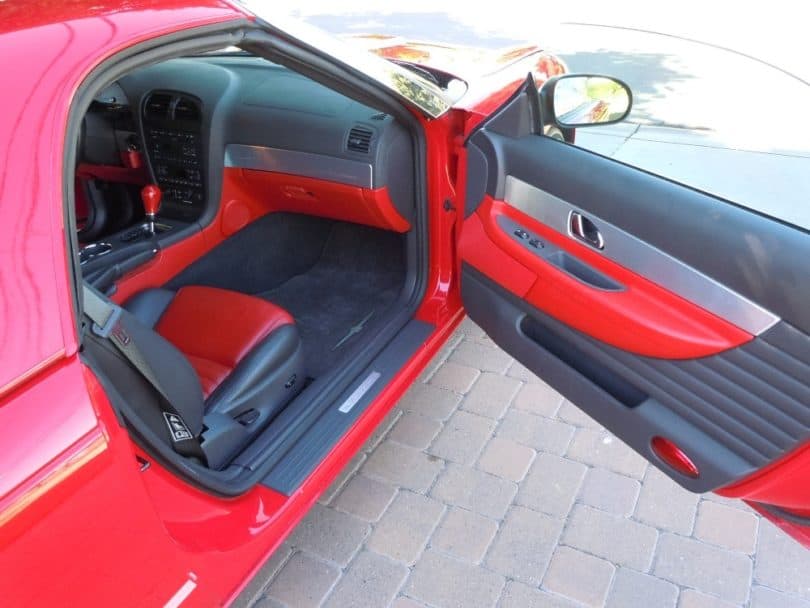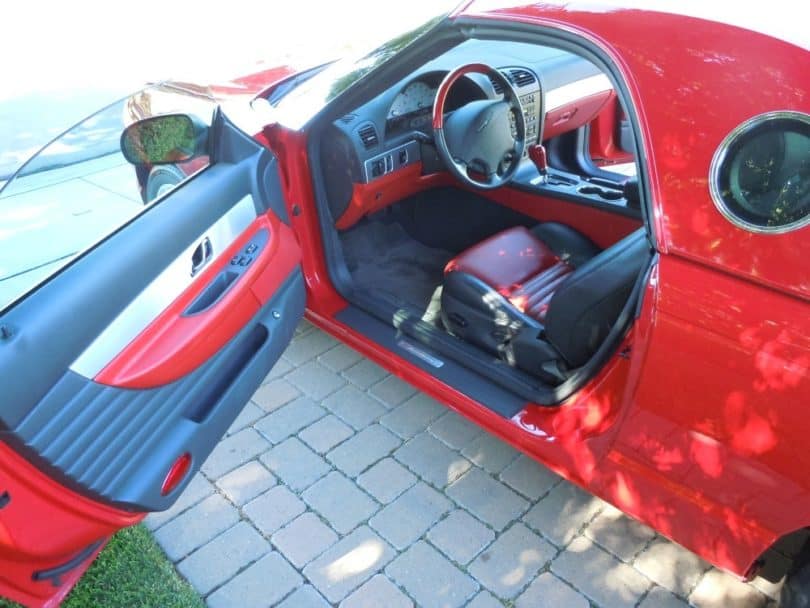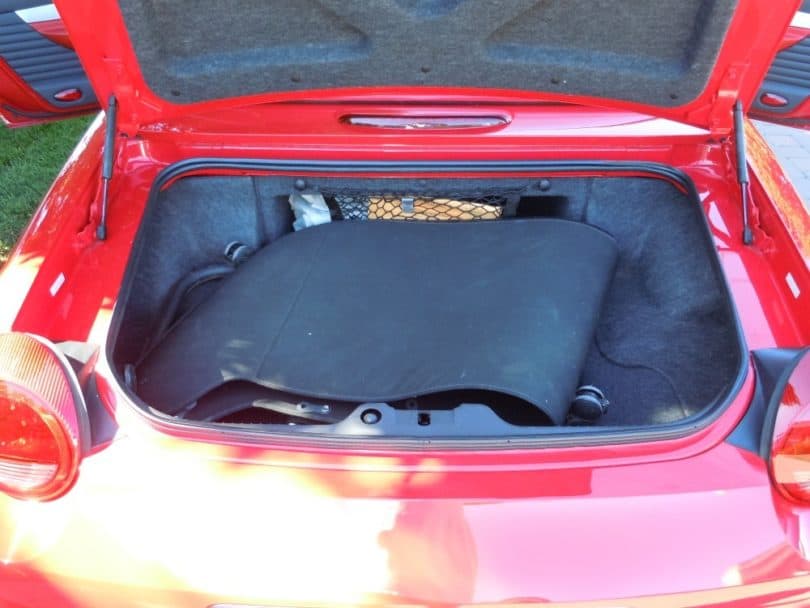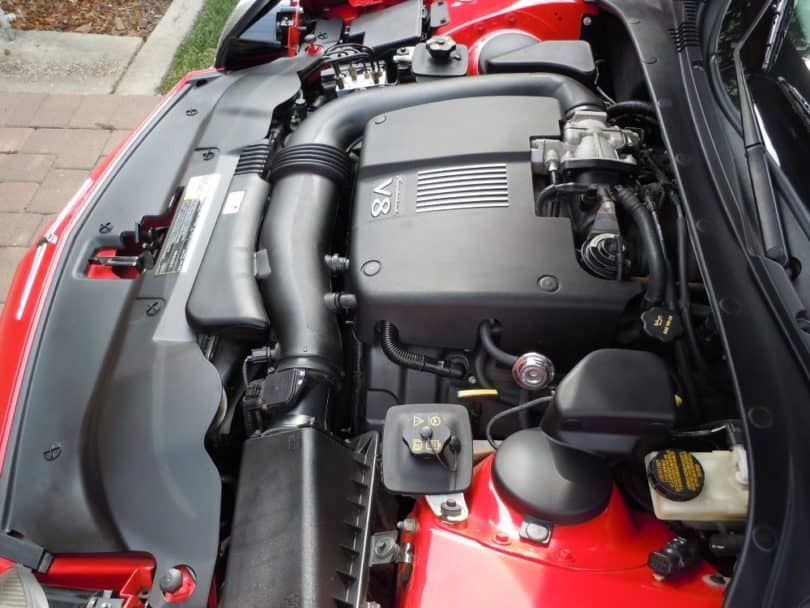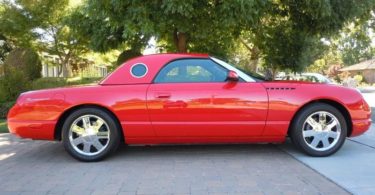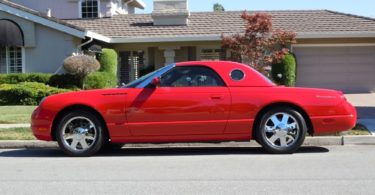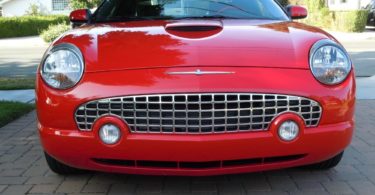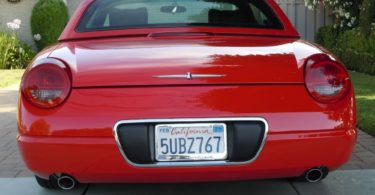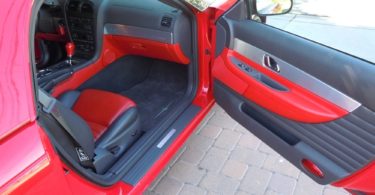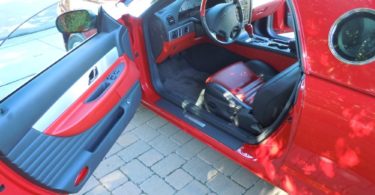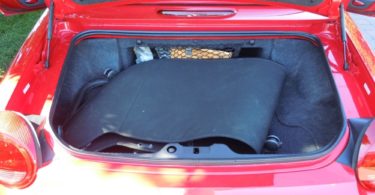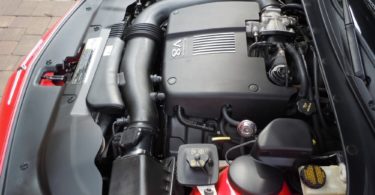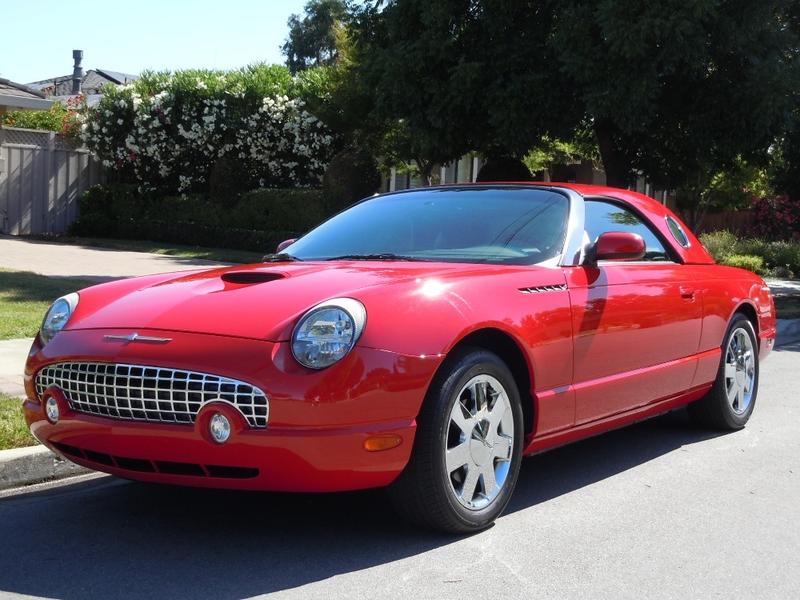
“Altogether, one heavenly idea.” 2002 Thunderbird sales brochure
- The 2002 Thunderbird marked the first year of the 11th generation of the car, and the styling harkened back to the original 1955-57 models.
- The car was named Motor Trend’s 2002 “Car of the Year.”
- Prior to the 2002 reintroduction, the Thunderbird name had been on hiatus since 1997.
Muscle Car Specifications
Following the retro-styling trend in the first decade of the 21st Century of cars like the Volkswagon New Beetle, the Mini Cooper and Ford’s own Mustang, the 2002 revival of the Thunderbird was modeled on the early models of the Thunderbird that had already long been an American classic. Like it had been since its inception, the car was not marketed as a sports car, but as a personal luxury car, despite the fact that it was the first two-seater version of the car since 1957.
Upon arrival, the car was an instant hit among car-buyers and car magazines alike, and purchasing one was a fairly difficult task in the beginning because so many people were purchasing them. The exterior styling was highly praised, though the interior received far more mixed reviews. But for various reasons, the car quickly grew out of favor with car-buyers and reviewers alike, leading to its short four-year lifespan. In 2009, Car and Driver even put it on a list of “The 10 Most Embarrassing Award Winners in Automotive History.”
But in 2002, the Thunderbird’s revitalized future looked bright, and for good reason. It came with only one engine, a dual overhead cam 3.9 litre V8 that produced 252 horsepower, which most reviewers agreed was a perfect match for the size of the car. Like its ancestors, the car was available in either a soft-top convertible or a removable hardtop, complete with side “port hole” windows.
But despite the wide-array of standard features and options available, the interior of the car was not unanimously praised. Though the car didn’t use an aluminum looking plastic like many Ford cars at the time, Motor Trend complained that, “it’s painfully evident that the interior got sloppy seconds from the Lincoln LS.” This observation stemmed from the shared dash, instrument cluster and steering column, though the article also notes that this was an efficient way to save money in a car that already was relatively expensive, though not necessarily that expensive when compared to other two-seater roadsters.
2002 Thunderbird
Like the 1955-57 models, the Thunderbird was presented in only one model, though a wide-array of options could customize the car. One of the most attractive was the aforementioned hard top. One option that was strikingly absent was a manual transmission – the car only was available with a five-speed automatic.
Standard features included a fully independent suspension, 17-inch aluminum wheels, leather seating, four-wheel disc brakes and front and side airbags. Options included traction control and an interior option that offered seats, instrument panel and shift knob that matched the exterior color. The car was only available in three colors for the model year, torch red, inspirational yellow and Thunderbird blue, all of which harkened back to colors offered in the 1950s.
The base price for the 2002 Thunderbird was $35,495, but that easily pushed $40,000 once options were added. Production throughout the model year was 31,121, a number that would be more than cut in half the following year, and would continue to decline every year until the car was discontinued in 2005.
Competition
While the original Thunderbirds only had the Corvette as primary competition (and in fact nearly put that line out of business at the time), the new Thunderbirds had a wide-array of competitors, from domestic and foreign automakers. But by not attempting to present the car as a sports car, the Thunderbird had a wide-ranging appeal. Perhaps Motor Trend put it best:
“The T-Bird remains the only V8-powered roadster you can buy for under, or anywhere near, $40 grand. If you want one, we’d say, ‘Why not!’”
Engine Specifications
| Type | Size | Carb | Horse Power | Tourqe |
|---|---|---|---|---|
| DOHC | 240ci/3.9L | Sequential Fuel Injection | 252 hp @ 6100 rpm | 261 lb-ft @ 4300 rpm |
Performance Statistics
| 0 to 60 mph | Quarter Mile | Engine | Source |
|---|---|---|---|
| 7.0 sec | 15.2 sec @ 92.6 mph | 240ci/3.9L | insideline.com |
| 7.0 sec | 15.3 sec @ 92.0 mph | 240ci/3.9L | Motor Trend Jul 01 |
The Half Century Wait Was Worth It
Ford reintroduced the two seat convertible after nearly fifty years. The modern Thunderbird had a refined look but definitely borrowed much for the classic Thunderbirds of the 1950’s. Ford had built another instant classic. The lines were smooth and struck the right balance between retro design and contemporary tastes. Customers were lined up and Ford sold all it could produce even at a relatively expensive price. Performance was not great, but this wasn’t meant to be a performance car. It was designed for those long weekend drives to the golf course.

